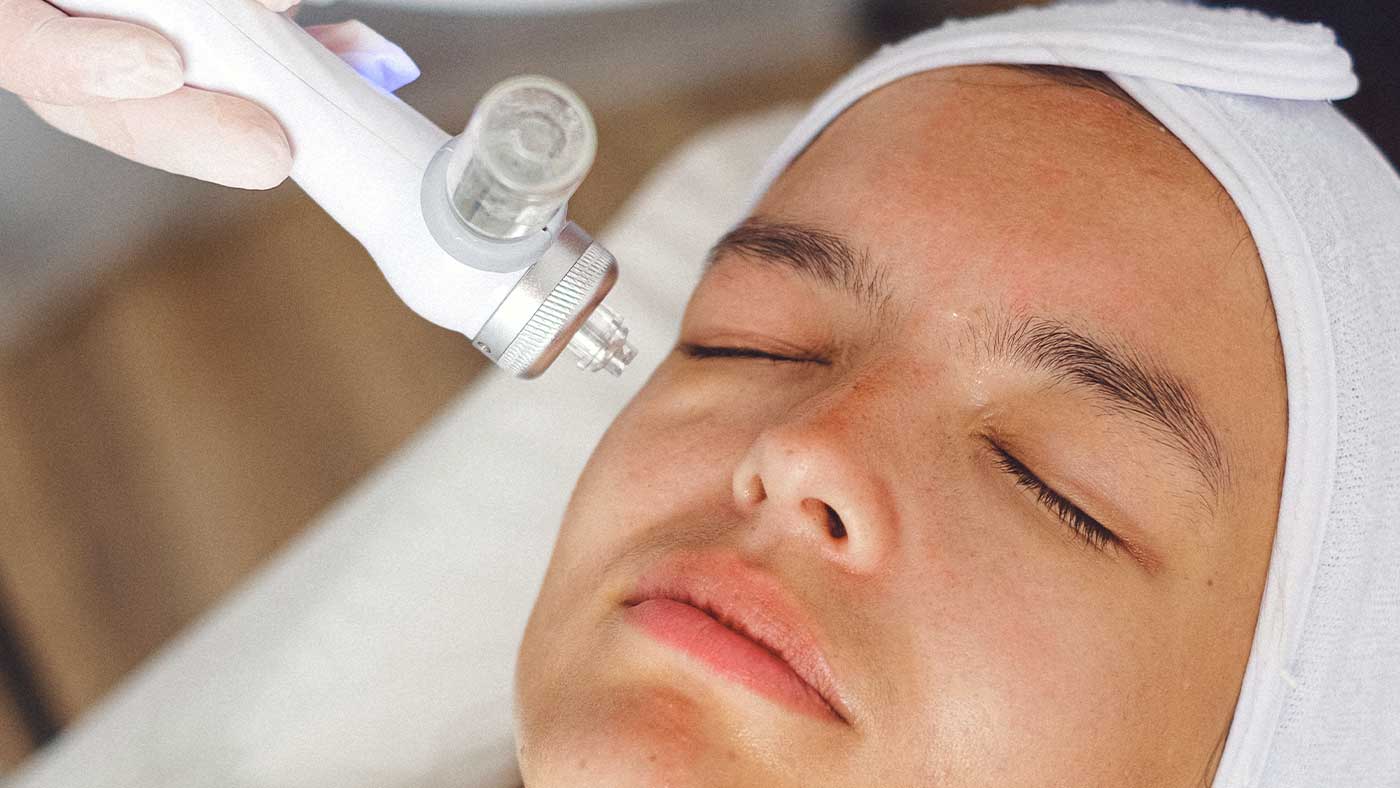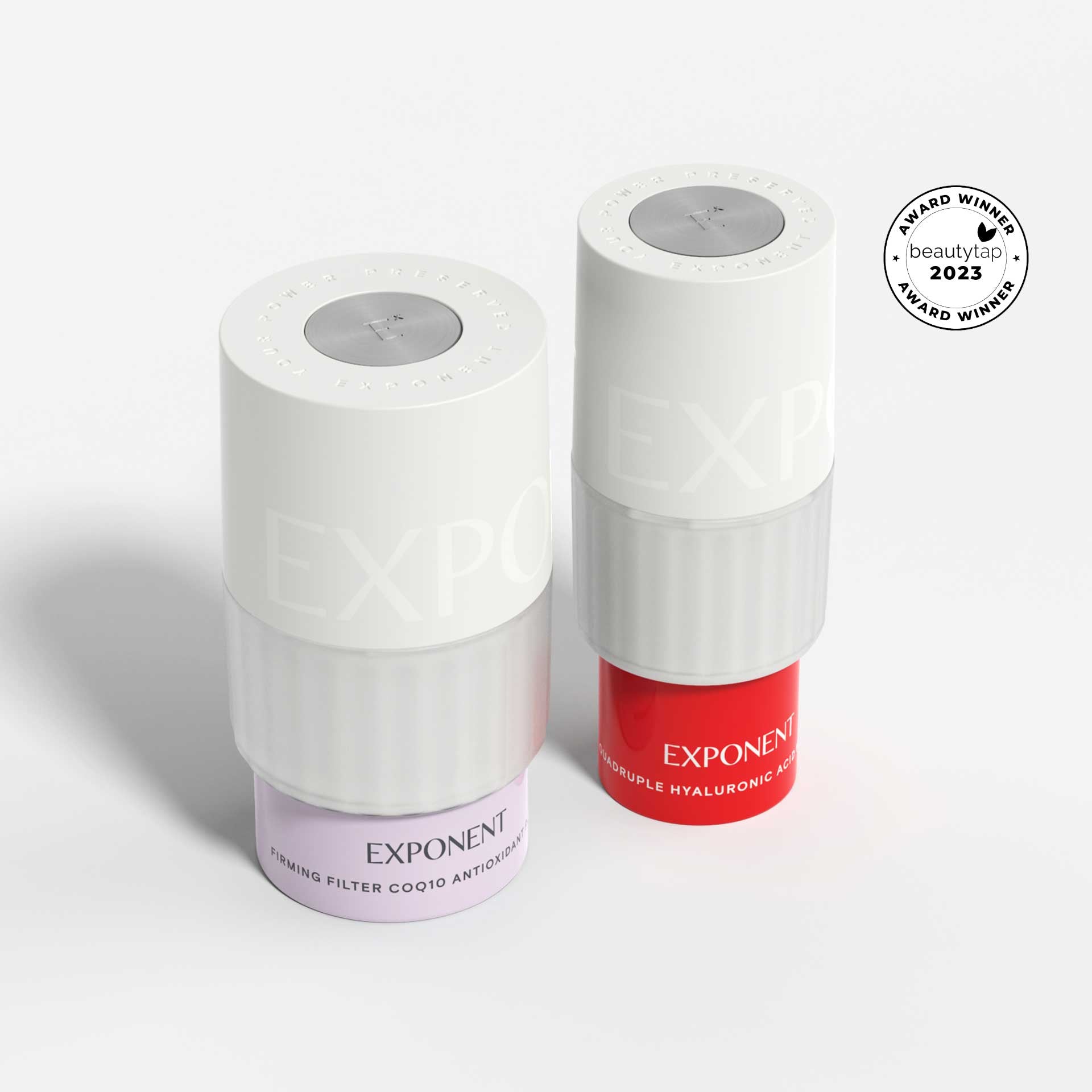When it comes to dramatic results, going under the skin has its benefits and many in-office procedures have become commonplace. Microneedling, dermaplaning, and chemical peels are the most sought-after because they jump-start collagen production, regenerate skin, and tackle a wide array of concerns.
These treatments share a commonality in that they leave the skin slightly traumatized and more exposed to damage, so the aftercare routine is important to get right. The benefit of these abrasions is that the skin is more susceptible to deeper absorption of your skincare products, thus increasing the results that you will receive from post-treatment application. Curious how it works? Here's the breakdown of the dos and don'ts of skin resurfacing treatments and how to care for your skin to get the best-in-class results.
Intensive, Anti-Aging Spa Treatments
Usually, intensive treatments involve creating controlled injuries in the skin, which signals the brain to initiate the healing process by inducing collagen and elastin production, ultimately encouraging cell turnover. The punctures created, however, can act as channels for bacteria to enter the skin, so the risk of infection and scarring is pretty high if the tools and environment are not sterile. So, consider a reputable professional with solid experience, regardless of how much time you have to wait for the appointment or the price.
Among intensive treatments, microneedling, dermaplaning, and chemical peels are the most popular, and you're about to find out why.
Microneedling
Microneedling is a safe, minimally-invasive technique that uses a needle-studded wand to create micro-injuries on the outermost skin layer and eventually down into the dermis, depending on the size of the needles. "The needles range from 0.5–2.5 mm and rotate over the skin from a pen-like device, which creates tiny wounds that breach the stratum corneum—the top-most layer of the skin—to reach the epidermis and deeper dermis," New York City-based dermatologist and Mohs (a skin cancer removal surgery) surgeon Mary Stevenson, M.D. says.[1] This controlled damage stimulates proteins to build which leads to firmer, more evenly textured, and smoother skin. As a result of collagen and elastin growth, increased cell turnover occurs, thus diminishing hyperpigmentation, post-acne marks, and sun spots.[2]
Right after microneedling, the skin can look swollen, and peeling may occur for the next three to five days. Product absorption increases when the skin is vulnerable, so what you slather on your skin post-microneedling is decisive for the actual result.
Microneedling Aftercare
The full recovery time after microneedling is usually between one and two weeks. During this period, you should avoid using exfoliants and retinol until your skin has completely healed. Wash your face with lukewarm water and a gentle cleanser that won't strip the skin of moisture — ideally, use one void of sulfates and fragrances. Also, avoid sweaty exercise for two-three days as it can contribute to swelling and irritation.
Hydration is crucial post-microneedling, so you should get your hands on a hyaluronic acid serum to avoid dehydration, scarring, and flakiness. For the record, our Hydrator contains four molecular sizes of hyaluronic acid for instant and long-term moisture, plus five other humectants for the pinnacle of hydration. Pair it with our gentle Calm Revival Serum, full of green tea, resveratrol, asiaticosde, and chamomile oil to reduce redness, prevent moisture loss and repair the skin.
To some degree, flakiness is normal after microneedling — it's the dead skin that falls off, which makes room for new healthy cells. By no means should you force the process and peel your skin; that can cause irreversible damage. Instead, keep your skin moist to speed up healing, and apply moisturizer more often than usual if needed. Opt for a moisturizer that blends emollients and occlusives to soften rough patches and hinder moisture loss.
Last but not least, sunscreen is crucial after microneedling (as it is every day), so apply SPF every morning to prevent sun damage that may reverse the therapy's results.
Dermaplaning
Dermaplaning is a non-invasive cosmetic procedure involving manual exfoliation of the uppermost skincare layer, which removes dead cells, peach fuzz, debris, and bacteria. This painless technique is performed with a surgical blade dragged slowly across the skin and is a light alternative to resurfacing that everyone can appeal to.
The effects of dermaplaning are immediately visible, especially brightness, softness, and a more even tone. In the long run, the procedure minimizes hyperpigmentation, makes fine lines appear less visible, and induces an overall healthy appearance.
Dermaplaning Aftercare
With the uppermost layer of skin exfoliated, product absorption boosts, so you should align your routine with your skin needs. First, steer clear of any harsh compounds, avoid scrubs, exfoliators, retinol, and glycolic acid for three to five days, and don't pick at your skin.
As a fresh layer of skin is exposed, it's crucial to protect it with antioxidants to prevent free radicals from wreaking havoc on your new complexion. We suggest antioxidants that, in addition to neutralizing free radicals, spur collagen growth and brighten — yes, vitamin C, is the one. Our Brightening Boost Vitamin C Serum does just that (and more!)
Also, after a dermaplaning treatment, feel free to use hydrating products, gel masks, or your favorite nourishing essence and allow your hyperclean face to drink all of the goodness. Per usual, keep your skin moisturized and use sunscreen with at least 30 SPF daily as well.
Chemical Peels
Chemical peels involve applying a chemical solution to the skin to dissolve the top layer, allowing the tissue to repair and renew. Depending on the concentration used, chemical peels can be: superficial, meaning it will only penetrate the outermost skin layer, medium intensity, meaning it will reach the middle layers of the skin, and a deep peel, which will sink fully into the dermis for more dramatic results.
Usually, chemical solutions include alpha-hydroxy acids, salicylic acid, trichloroacetic acid (TCA), or Jessner's solution (salicylic acid, lactic acid, and resorcinol mixed in an ethanol base), and they can often be blended for more transformative results.[3] Once applied to the skin, chemical peels cause the superficial layer to peel off, which benefit clogged pores, fine lines and wrinkles, and discoloration. If you undergo the treatment regularly, your complexion has a better chance of staying firm, luminous, and baby-soft.
Chemical Peel Aftercare
Skin that peels and exfoliates means that any skincare products you use will be able to penetrate more easily, making the aftercare as essential as the procedure itself. As is the case for most minimally-invasive skincare treatments, you should avoid the use of retinol, exfoliators, and drying alcohol, as well as, waxing, strenuous exercise, and the sauna for 3-5 days.
Until your skin is fully recovered, you'll want to use mild ingredients that also aid in repairing the skin while increasing firmness and improving tone and texture, like coenzymeQ10, niacinamide, probiotics, and squalane. You can't go wrong with the Firming Filter CoQ10 Serum, clinically proven to reduce the look of fine lines and wrinkles, boost firmness and improve tone — gently enough to be used after a chemical peel.
Handle With Care
In-office procedures never go out of trend, and they're great for achieving more dramatic results. They tackle all concerns at once, and the best part is that they increase absorption, helping you get more from your topical products (especially serums!) Your best bet on serums is one that's housed in a system to protect ingredients so it will deliver peak effectiveness in every dose. Guess it's about time we introduce you to our Self Activated Superior Serums, which use active powders that keep their potency until the instant you activate them with our Quadruple Hydration Hyaluronic Serum. Aka - perfect for your Spa Procedure aftercare routine.
Footnotes
- Vogue, What Is Microneedling? An Expert Answers All Your Questions, Source
- Alster TS, Graham PM. Microneedling: A Review and Practical Guide. Dermatol Surg. 2018 Mar, Source
- Samargandy S, Raggio BS. Skin Resurfacing Chemical Peels. [Updated 2022 May 1]. In: StatPearls [Internet]. Treasure Island (FL): StatPearls Publishing; 2022 Jan, Source





